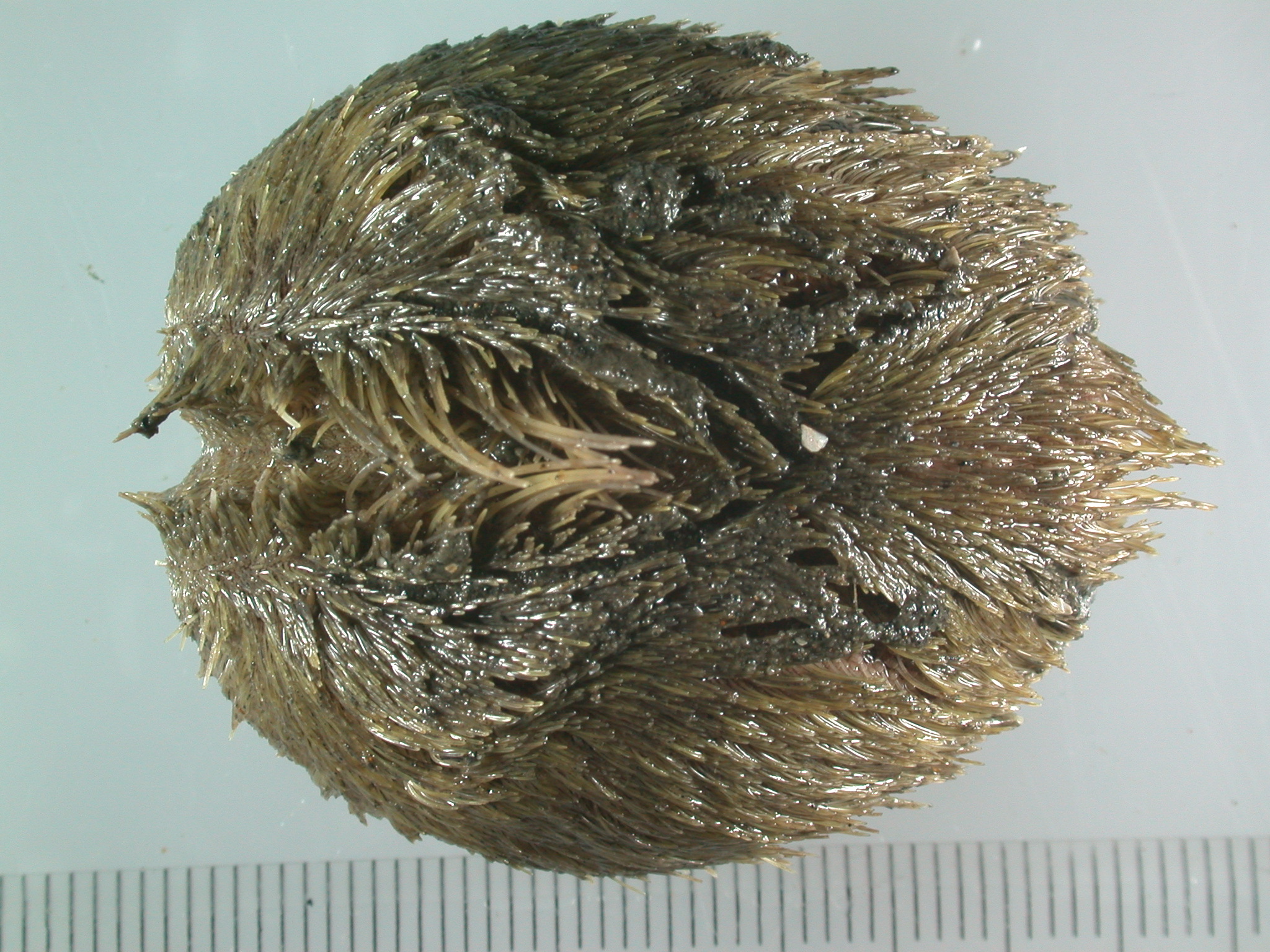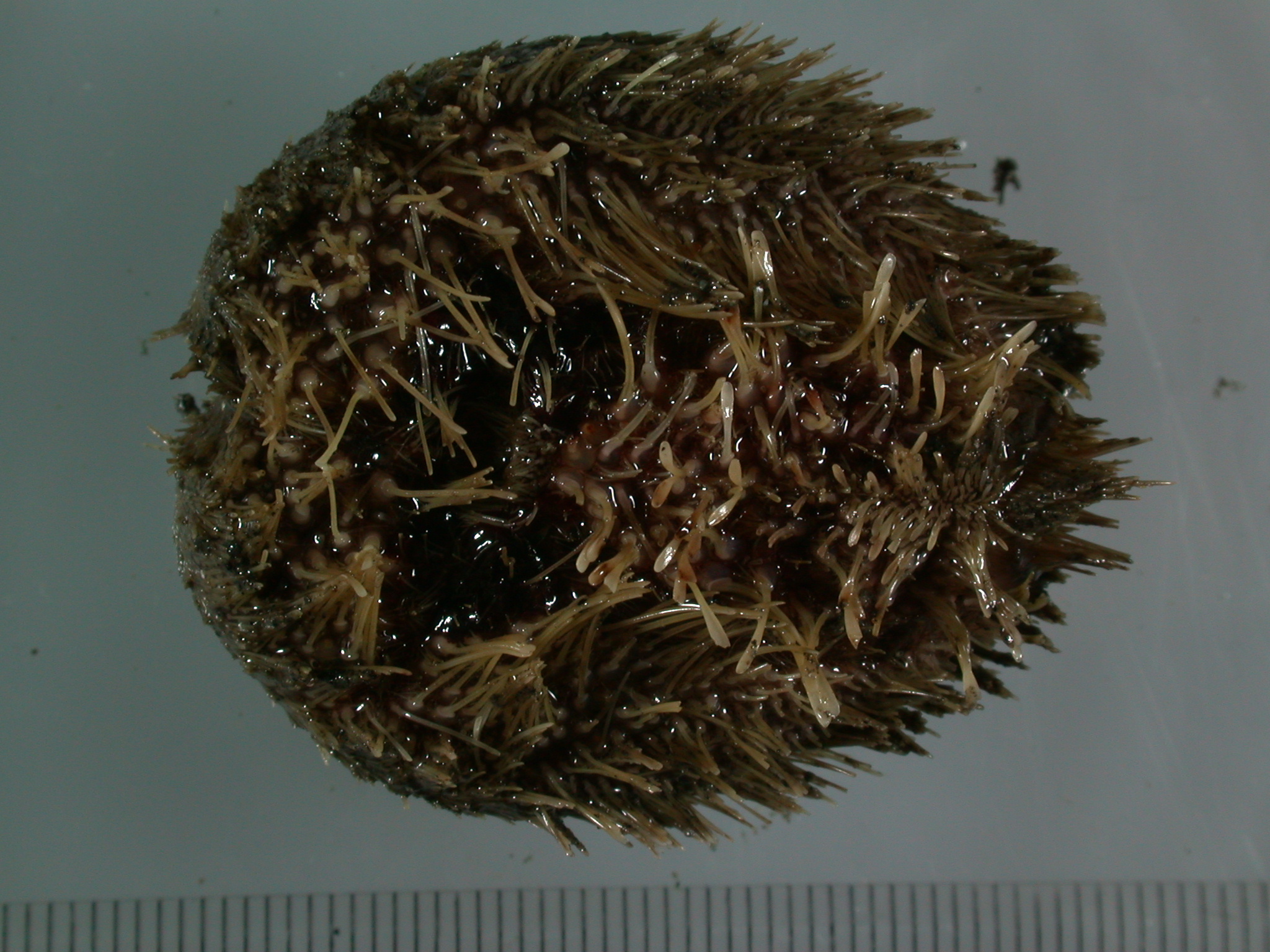This Echinocardium cordatum was obtained from sandy soil at Oshoro Bay, Hokkaido, Japan, about 43°12′N, 140°51′E, on 25 June 2012 by Yuki Sasaki and Kouki Murano , photographed and identified by Hiroshi Kajihara as Echinocardium cordatum Brandt, 1851 based on Nunomura (1992: 216, pl. 81-12), and fixed in 99% EtOH. DNA was extracted from an ovary using the silica method (Boom et al. 1990) with some modifications. Extracted DNA was dissolved in 30 µl of deionized water and has been preserved at –20°C. Remaining morphological voucher specimen has been deposited at the Hokkaido University Museum under the catalogue number ICHU22100295 (contact: Dr. Hiroshi Kajihara, kazi@mail.sci.hokudai.ac.jp).
Amplification of mitochondrial cytochrome c oxidase subunit I gene (COI) by polymerase chain reaction (PCR) using LCO1490 (5′-GGTCAACAAATCATAAAGATATTGG-3′) and HCO2198 (5′-GGTCAACAAATCATAAAGATATTGG-3′) (Folmer et al. 1994) was unsuccessful.
An about 1.5K-bp fragment of 28S ribosomal RNA gene was amplified by PCR using LSU5 (5′-ACCCGCTGAAYTTAAGCA-3′) and LSU3 (5′-TCCTGAGGGAAACTTCGG-3′) (Littlewood et al. 1994). A hot start PCR was performed by a thermal cycler, DNA Engine (Bio-Rad), in a 20-µl reaction volume containing 1 µl of template total DNA (approximately 10–100 ng) and 19 µl of premix made with 632-µl deionized water, 80-µl Ex Taq Buffer (TaKara Bio), 64-µl dNTP (each 25 mM), 8-µl each primer (each 10 µM), and 0.1-µl TaKara Ex Taq (5 U/µl,TaKara Bio). Thermal cycling condition comprised an initial denaturation at 95°C for 30 sec; 30 cycles of denaturation at 95°C for 30 sec, annealing at 45°C for 30 sec, and elongation at 72°C for 45°C and a final elongation at 72°C for 7 min.
The PCR product was purified with the silica method (Boom et al. 1990). Single strand was sequenced with a BigDye® Terminator v3.1 Cycle Sequencing Kit (Applied Biosystems) following the manufacturer's protocol, using LSU3, LSU5, D2F (5′-CTTTGAGAGAGTT-3′) (Littlewood. 1994), and 28z (5′-CTTGGTCCGTGTTTCAAGAC-3′) (Hillis and Dixon. 1991). D2F and 28z are internal primers. Sequencing was performed with ABI Prism 3730 DNA Analyzer (Applied Biosystems). Chromatogram and sequence data were operated with MEGA v5 software (Tamura et al. 2011).
Results
A total of 456 bp of 28S rDNA sequence was determined from Echinocardium cordatum (see Appendix).
Taxonomy
Order Spatangoida
Family Loveniidae Lambert, 1905
Genus Echinocardium Gray, 1825
Echinocardium cordatum Pennant, 1777
(Figs 1, 2)

Fig. 1. Echinocardium cordatum (ICHU22100295), dorsal view.

Fig. 2. Echinocardium cordatum (ICHU22100295), ventral view.
References
BooM, R., Sol, C. J. A., Salimans, M. M. M., Jansen, C. L., Wertheim-van Dillean, P. M. E., and van der Noordaa, Jand Dixon, J. 1990. Rapid and simple method for purification of nucleic acids. Journal of Clinical Microbiology 28: 495–503.
Hills, D. M. and Dixon, M. T. 1991. Ribosomal DNA: molecular evolution and phylogenetic inference. Quarterly Reviw of Biology 66: 411-453.
Littlewood, D, T. 1994. Molecular phylogenetics of cupped oysters based on partial 28S rRNA gene sequence Molecular Phylogenetics and Evolution 3: 221–229.
Nunomura, N. 1992. Isopoda. Pp. 205–233. In: Nishimura, S. (Ed.) Guide to Seashore Animals of Japan with Color Pictures and Keys. Vol. II. Hoikusha, Osaka.
Tamura, K., Peterson, N., Stecher, G., Nei, M., and Kumar, S. 2011. MEGA5: Molecullar Evolutionary Genetics Analysisv(MEGA) using maximum likelihood ,evolutionary distance, and maximum parsimony methods. Molecular Phylogenetics and Evolution 28: 2731–2739.
Appendix
28S rDNA sequence from ICHU22100295 identidied as Echinocardium cordatum.
TGGTGTTTAGGTCAGCTCGCGGAGATGCTGCTCCACTCCAAGTCCTATAATGAGTAAGGTTACTCGGACGTGGCCCACAGAGGGTGAAAGGCCCGTGGGGGTGGAGAATCAGCGTCTTTCTGAGCAGACCTTGGAGTCGGGTTGTTTGAGAATGCAGCCCAAAGTGGGTGGTAAACTCCATCCAAGGCTAAATACTAACACGAGTCCGATAGCGAACAAGTACCGTGAGGGAAAGTTGAAAAGTACTTTGAAGAGAGAGTAAACAGTGCGTGAAACCGCTCAGAGGTAAACGGGTGGAGTTGAACTGCAAGCTCTGAGAATTCAGCTGATGAGTCTGGCATGAGCTTGGTCATGTGGGTTGTGTGTTCGGGTCTGCTTAGCTGCAGGTCCTCGCCTCTGGTGGGGATGCGCGTATCACTTATCAAGTGTTGTGCGCCCGGGCTTTATCGGACCTGC